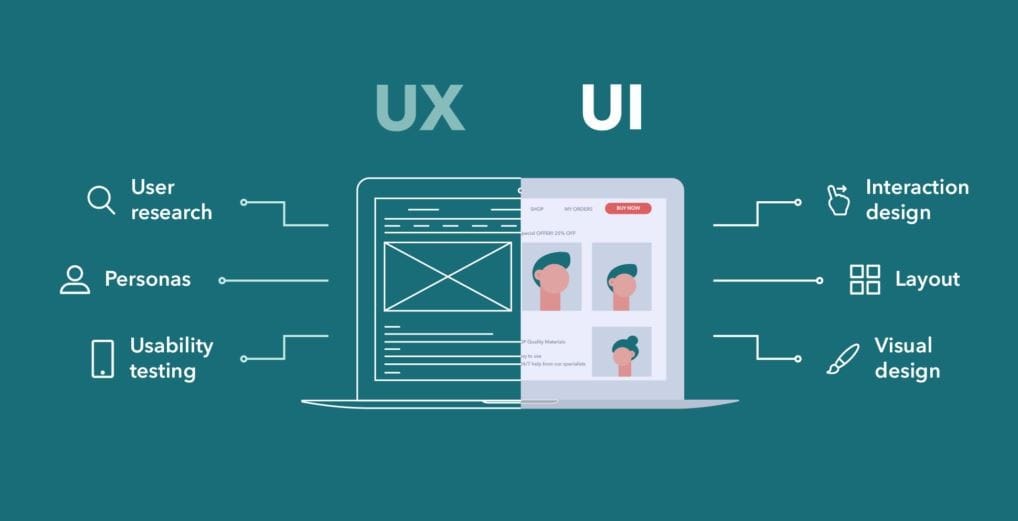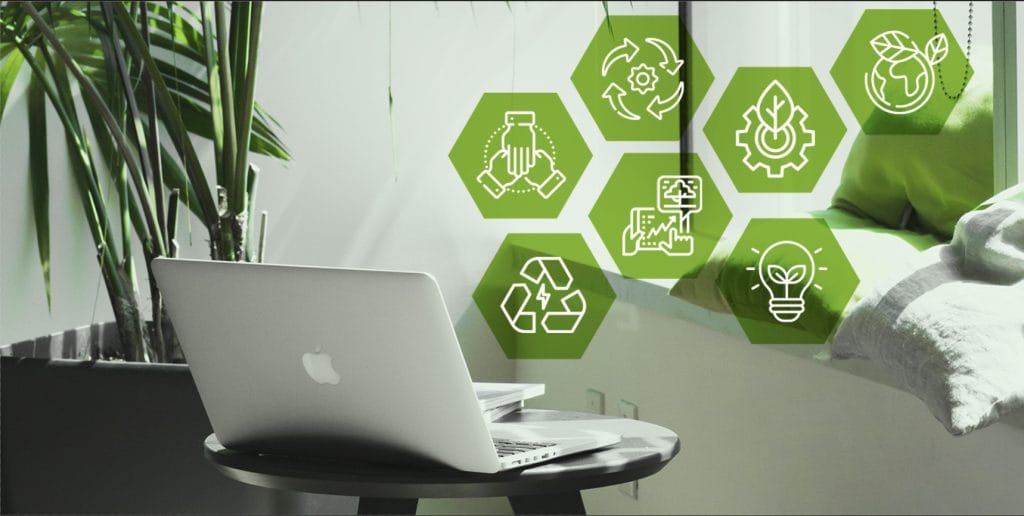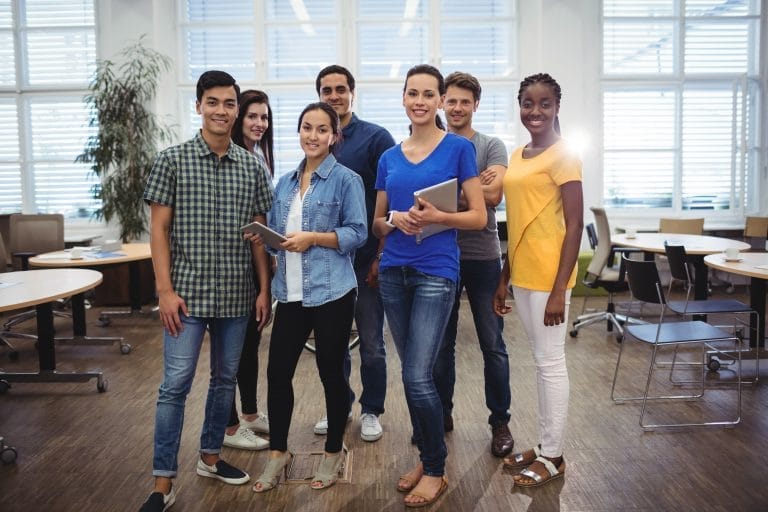Welcome to the edge of the digital universe, where pixels are the building blocks of reality and the soft hum of innovation sets the tempo. In 2025, web design is not just about creating functional websites; it’s about crafting immersive experiences that resonate deeply with users. The evolution of web design has always been tied to technological advancements and user expectations. But as we stand on the brink of a digital renaissance, let’s explore how web designers, digital marketers, and tech enthusiasts can adapt to new technologies and trends to ride the waves of the future.
The Origin of Web Design Journeys Through Time
The web design landscape was once a simple, flat plain—a world of static pages and basic links. In the early days, websites were little more than digital brochures. Text-heavy and image-light, their job was merely to display information. Fast forward to today, and web design has transformed into a complex, multidimensional space. It demands a fusion of aesthetics, functionality, and interactive elements that captivate users.
Tracing the history of web design reveals how tools and technologies have evolved. From HTML tables to CSS layouts, and now to responsive design, each stage has introduced new challenges and opportunities. This ongoing evolution teaches us that adaptability is key. The designers who thrive are those who learn from the past and look boldly towards the future.
Current State of Web Design Where We Stand
As of 2025, web design is a kaleidoscope of possibilities. Today’s web is mobile-first, user-centered, and data-driven. Responsive UI/UX has become the gold standard. Every pixel is meticulously placed to ensure that no matter how or where users access a website, their experience is seamless and engaging.
Designers are no longer just creators; they are architects of digital experiences. They rely on powerful design tools and frameworks that streamline workflows and enhance creativity. This shift has empowered designers to push boundaries, blending artistry with technology to forge unique digital landscapes.
But it’s not just about aesthetics. Website performance and accessibility have taken center stage. Designers must balance beauty with functionality, ensuring sites load quickly and are accessible to all users, including those with disabilities. This focus on inclusivity and efficiency underscores the need for designers to continually refine their skills and adapt to the evolving digital terrain.

Emerging Technologies Shaping the Future
The future is knocking at our screens, and it’s bringing a suite of cutting-edge technologies that will redefine web design. Artificial Intelligence (AI) is leading the charge, offering tools that automate mundane tasks and provide deep insights into user behavior. AI-driven design systems can generate layout suggestions, optimize color schemes, and even predict user interactions.
Virtual Reality (VR) and Augmented Reality (AR) are also making their mark. These technologies offer the potential to create immersive web experiences that transport users to new realms. Imagine exploring a virtual showroom or overlaying digital elements onto the real world—all within a web browser. The possibilities are limited only by imagination.
Blockchain technology is another trend poised to influence web design. While often associated with cryptocurrencies, blockchain offers opportunities for decentralized web applications, enhancing security and transparency. Designers who grasp the intricacies of these technologies will be well-positioned to pioneer innovative solutions and drive the future of web design.

Trends to Watch in 2025 Crafting Tomorrow's Interfaces
Looking ahead to 2025, certain web design trends are set to dominate the digital landscape. Minimalism is expected to reign supreme, with designers focusing on clean lines, ample white space, and simple navigation. This approach not only enhances user experience but also aligns with the growing demand for faster loading times.
Microinteractions will continue to play a pivotal role in engaging users. These subtle animations or visual cues provide feedback and enhance interaction, making websites feel more dynamic and intuitive. When done right, microinteractions can delight users and elevate overall design quality.
Dark mode is also here to stay. Offering a sleek alternative to traditional light themes, dark mode reduces eye strain and conserves battery life on devices. It has become a preferred choice for many users, and designers must ensure their websites offer seamless transitions between light and dark modes.

The Role of Responsive Design in 2025 Ensuring Seamless Experiences
Responsive design is no longer optional; it’s a necessity. With an increasing number of users accessing websites via mobile devices, designers must ensure their sites are adaptable to screens of all sizes. This trend will only intensify as more devices—think smartwatches and IoT gadgets—become prevalent.
The key to successful responsive design lies in flexibility. Fluid grids, flexible images, and media queries are essential components. Designers must also consider touch interactions, ensuring buttons and links are easily accessible on smaller screens. By prioritizing responsive design, businesses can enhance user satisfaction and maintain a competitive edge.
UX and UI The Twin Pillars of Successful Design
User Experience (UX) and User Interface (UI) are two sides of the same coin, and both are critical to successful web design. While UI focuses on the visual elements of a website, UX is all about how users interact with those elements.
In 2025, the emphasis on UX/UI will be stronger than ever. Designers must create cohesive, intuitive interfaces that guide users seamlessly through their online journeys. This involves understanding user needs and behaviors, conducting thorough research, and iterating designs based on feedback.
Empathy is a powerful tool in a designer’s toolkit. By putting themselves in users’ shoes, designers can create experiences that resonate on a deeper level. This approach not only fosters loyalty but also drives conversions and boosts overall business success.

Personalization Crafting Tailored Experiences
Personalization is the secret ingredient for creating memorable web experiences. In 2025, users expect websites to anticipate their needs and offer tailored content. This is where data analytics and AI come into play, allowing businesses to deliver personalized recommendations and experiences.
Designers must strike a delicate balance between personalization and privacy. Transparency and ethical data usage are paramount. By respecting user privacy and providing value through personalization, businesses can build trust and foster long-term relationships.
Imagine visiting a website that greets you by name, remembers your preferences, and suggests products or content you genuinely care about. This level of personalization is the future, and it holds immense potential for businesses to engage and delight their audiences.
Accessibility and Inclusivity Designing for All
Web design is not just about aesthetics; it’s about inclusivity. Ensuring websites are accessible to all users, regardless of their abilities, is a moral and legal obligation. In 2025, accessibility will be a non-negotiable aspect of web design.
Designers must adhere to accessibility standards, such as the Web Content Accessibility Guidelines (WCAG). This involves using semantic HTML, providing alt text for images, and ensuring sufficient contrast between text and background.
Inclusive design goes beyond compliance. It’s about creating experiences that empower everyone. By prioritizing accessibility, businesses can reach a broader audience, enhance user satisfaction, and demonstrate their commitment to social responsibility.

The Power of Storytelling in Web Design Engaging Users on a Deeper Level
Storytelling is a timeless tool that transcends media, and web design is no exception. In 2025, storytelling will be a potent means of connecting with users on an emotional level. Through compelling narratives, designers can create immersive experiences that captivate and inspire.
Websites are no longer static pages; they’re dynamic canvases that communicate brand values and messages. By weaving stories into design elements, businesses can convey their mission and vision, leaving a lasting impact on visitors.
From interactive timelines to animated sequences, storytelling techniques can elevate web design, transforming websites into engaging experiences that resonate with users long after they’ve left the page.
Sustainability in Web Design Building a Greener Digital World
Sustainability is a critical consideration for businesses in 2025, and web design is no exception. Environmentally conscious design practices are gaining traction, driven by the need to reduce carbon footprints and conserve resources.
Designers can contribute to sustainability by optimizing websites for performance and efficiency. This includes minimizing file sizes, reducing server requests, and implementing lazy loading techniques. By doing so, businesses can lower energy consumption and deliver faster, more efficient user experiences.
Sustainable design is not just a trend; it’s a movement. By adopting eco-friendly practices, businesses can align with consumer values, enhance their brand reputation, and make a positive impact on the planet.

Conclusion Navigating the Future of Web Design
2025 is not just another year; it’s a milestone in the evolution of web design. As we stand at the crossroads of innovation and creativity, the future is rich with possibilities. By adapting to new technologies and staying attuned to emerging trends, designers, digital marketers, and tech enthusiasts can shape the digital landscape for years to come.
The key to success lies in a willingness to learn, experiment, and evolve. By harnessing the power of AI, VR, personalization, and sustainability, businesses can create meaningful connections with users and unlock new opportunities for growth.
Are you ready to take the leap into the future of web design? Let’s start this exciting journey together, and remember—the horizon is not a limit; it’s just the beginning.

